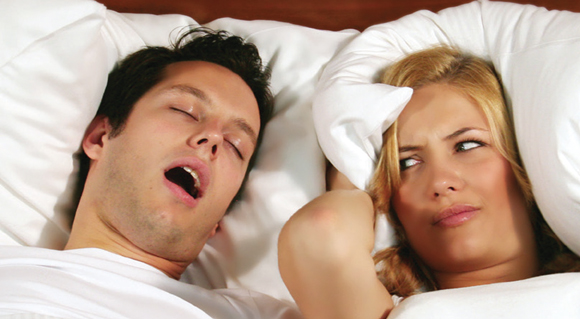Do you snore? If you do, it’s not just getting elbowed at night by your bed partner that you should be worried about. Your health may also be at risk! Snoring can be a sign of Obstructive Sleep Apnea (OSA), which is a problem with breathing during sleep. During sleep the muscles in the back of the throat become more relaxed, this combined with collapsible soft tissues in the throat, can cause a blockage in the airway. The first sign of an impending blockage is snoring. The pauses in breathing can last many seconds and can deprive vital organs of oxygen. In addition to snoring and pauses in breathing, other symptoms of OSA can include awakening with a gasping or chocking sensation, frequent nighttime urination, morning headaches, dry mouth upon awakening, and frequent heart burn.
Dangers of untreated sleep apnea’
During an apnea occurrence, brief awakening is necessary in order to start breathing normally. These occurrences can happen hundreds of times a night often resulting in the person feeling tired when they wake up and throughout the day. There may be associated difficulty with concentration and decreased mood levels. The fatigue can also contribute to accidents on the job and behind the wheel of a car. Most important, if left untreated sleep apnea increases the risk of heart attacks, irregular heart rhythms, strokes, high blood pressure, and even diabetes. In rare cases, severe sleep apnea may result in death during sleep.
Fortunately, there are options for the treatment of OSA. Because most patients with sleep apnea are overweight, the most effective long-term solution is weight loss, which decreases the bulk of soft tissue in the upper airways. However, not all OSA sufferers are obese and anyone with symptoms of sleep apnea should be taken seriously. Other treatment modalities are often recommended in conjunction with weight loss. The most common and effective treatment option is CPAP, which is a machine that pressurizes room air that is blown in through a hose and mask worn by the patient during sleep. The pressurized air acts like a pneumatic splint and keeps the airways open. Another option for patients with mild or moderate of degrees of sleep apnea is oral appliance therapy, which involves wearing a special device that is fitted by a dentist. Most of these devices work by thrusting the lower jaw forward. Surgery of the upper airways, most often performed by an ENT doctor, can be effective in some patients. Finally, weight loss surgery is an option for obese patients who have been unable to lose weight through diet and exercise.
A New Method of Testing
So how can one find out if they have sleep apnea? Traditionally patients had to go for an overnight sleep study at a sleep lab. They would be hooked up with many wires and observed by a sleep technologist. While this is considered to be the most accurate method of diagnosing sleep apnea, it can be uncomfortable and anxiety provoking for many patients. Fortunately, there is now the option of getting tested in one’s own home, which is a welcome relief for most patients. The home testing devices used are typically small, most using simple belts to go over the chest and sensors next to the nose and/or mouth. Some models of home testing equipment can be simply worn on the wrist or forehead. Often, these devices can even be shipped to the patient’s home. This is preferred by many patients since it is comfortable and easy!
In summary, don’t assume that your snoring is only bothersome to those around you; it may also be a significant health risk to you. Obstructive Sleep Apnea is a common and serious medical condition that can be treated effectively. It can now also be diagnosed in one’s own home. Speak to your doctor if you have symptoms of OSA and consider getting tested soon!
ABOUT THE AUTHOR: Dr. Lev Grinman is the medical director of HomeSleep Medical, PC in Paramus, New Jersey. HomeSleep specializes in testing patients for obstructive sleep apnea through portable home sleep testing devices delivered by mail. Dr. Grinman is board certified in Sleep Medicine and Neurology. He has published and also lectures on the topic of obstructive sleep apnea.



